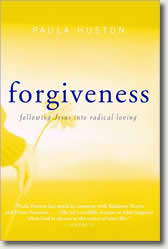Chastity
 Recently, a young friend moved in with us—lovely Anna, with dark curls and long lashes, luminous skin and delicate waist. Our own kids are in their thirties by now, young parents with the beginnings of crows’ feet around their sleep-deprived eyes, and it has been a long time since Mike and I have lived with an eighteen-year-old in the full bloom of her beauty. But having her with us brings back memories.
Recently, a young friend moved in with us—lovely Anna, with dark curls and long lashes, luminous skin and delicate waist. Our own kids are in their thirties by now, young parents with the beginnings of crows’ feet around their sleep-deprived eyes, and it has been a long time since Mike and I have lived with an eighteen-year-old in the full bloom of her beauty. But having her with us brings back memories.
I’d forgotten what it was like to toil so diligently at getting the mascara/eye-liner ratio precisely right. I’d forgotten the days when gaining a pound precipitated an emotional crisis. Yet physical appearance is paramount in our culture, and our young friend is at the beginning of her adult life, without many credentials beyond her looks. Consciously or not, she knows that to be sexually attractive is to hold a certain kind of power over others. Whether she gets extra help with a difficult class from a bedazzled male professor or beats out the competition in a job search, she understands that at some level, her looks are key to her success.
Though chances are high that beautiful people have always had the edge, our particular culture is so obsessed with sexual allure that it’s hard to imagine what else we might focus on. The disheveled ingénues staring moodily from the magazine racks at the grocery store, the movie-star couples-of-the-week, the smart sexy models on the cover of Cosmopolitan and GQ —all bear the same message: You are somehow inadequate unless you look like us, dress like we do, spend the money we spend, and attract the people we attract. For a teenager like Anna, the compulsion to improve on her natural beauty in whatever way she can is nearly irresistible.
And I have to admit, looking good still matters to me too, despite my grandmotherly status. Recently, for example, I was asked to come up with an updated author photo, a request that filled me with dismay. Why couldn’t we just use the one I’d been using for the past ten years? I looked a lot younger in that one, didn’t I? Yes, my publisher gently agreed. You certainly did.
Though I was a bit ashamed of myself for still caring so much about appearance, the fact is that voluntarily giving away power by stepping out of the looks-enhancement game is downright disorienting in a culture that takes sexuality so seriously. To a large degree, our appearance determines our self-identity, and when we lose our attractiveness we risk losing our sense of self.
Yet ancient spiritual wisdom insists that we are far more than our looks, and a focus on being sexually alluring can keep us anchored to the surface. Imprisoned in our physicality, we are blocked from reaching the spiritual heights and depths we are meant to experience. If our sense of self is tied solely to the body and how it looks, we fail to understand our true identities as children of God and partakers in the divine life. To avoid this mistake, the old monks of the desert took up the discipline of chastity.
Chastity begins by acknowledging and honoring the original goodness of all flesh, including the physical passions. Under this view, sexual passion is a divine gift, in its own way sacred. When we look at other people’s bodies with the eyes of chastity rather than with self-serving greed, we look with reverence instead of lust. Human loveliness—the heedless sensuality of a young Anna, for example—serves as an occasion for thanksgiving at the gratuitous beauty of creation rather than an opportunity for sexual gluttony, fantasy or envy. Chastity purifies our vision.
Yet the discipline can accomplish even more in us. Living chastely means living modestly—purposely foregoing the opportunity to wield sexual power over someone else. When we deliberately give up our sexual edge, we also give up a dangerous illusion: that we can somehow control our own lives or the lives of other people. And the loss of this illusion opens us up to the truth of our situation: that we are naked, vulnerable, and in great need of love. When we realize what we really are—not Cosmo or Gentlemen's Quarterly models in disguise, but weaklings in need of mercy—then we are freed up to see others in the same light. And thus compassion is born.
However, despite its obvious ability to counteract the more destructive elements of our sexually obsessed culture, chastity has a bad rap today. It’s not natural, we protest. We are made to be sexual beings—what’s wrong with celebrating that? Isn’t it downright dangerous to repress a natural urge? Won’t we become, as Freud so darkly predicted, hung up and neurotic if we refuse to act on our desires?
Everyone knows the word “celibate” is just a fancy term for “social misfit”: priests, nuns, monks, and all those who somehow got left out of the game. Besides the fact that an active sex life fosters mental health (all the magazines say so, after all) it’s also plain old fun. And what’s wrong with having a little fun? Besides, it’s nobody else’s business what people do with their bodies.
It’s important to remember that chastity does not necessarily entail celibacy. Though priests, nuns, and monks are indeed celibate (but rarely social misfits), it is possible to be chaste and sexually active at the same time. How? Through refusing to use another person for one’s own pleasure. Through seeing the other as a child of God, not as a personal possession. Through treating sex as a sacred act, worthy of reverence and respect. This is why ancient tradition limits the sexual relationship to marriage; according to the Gospels, only marriage provides the stability, commitment, and enduring love that can protect sexuality’s sacred nature and keep it from becoming casual or perverted, as in pornography.
But chastity does not come naturally, even for voluntary celibates. It calls out the highest in us; it speaks to the transcendent element of our nature, and transcending ourselves is never easy. We cannot become chaste by simply following our emotional noses. Chastity is a gift that we humbly seek, not a skill we develop on our own. Yet, as with all the virtues, our participation in the process of becoming chaste is critical. We have to be willing to hurt a little. And just as with fasting, the practice of chastity quickly reveals our weak planks—the places where we can be most easily tempted. The attempt to become chaste banishes self-deception and forces us to take an honest look at ourselves.
Sadly, it is hard to find chaste people in a culture so heavily focused on sex. Everywhere we turn, we are greeted with the same message: sex is abundant and free for the taking. As with fasting, we must deliberately and repeatedly turn down the invitation if we want to become chaste. Not easy, but when we do, wonderful changes occur in our lives. For as most priests, nuns, and monks can tell us, chastity and celibacy, when accepted in a spirit of humility and thanksgiving, can free us up to love without measure. To a large degree, liberating ourselves from the sexual attractiveness game releases us from the temptation to use others for our own purposes. Instead, we can deal with people’s real selves, not the shallow personas they put on parade.
Perhaps this is why some of my most intimate relationships are with monks. Over the years, I’ve discovered what a joy it is to love with chastity—self-protective barriers fall down in the face of innocent love, and the deepest self can safely be revealed. This is why my hope for our alluring young Anna is that she will pass safely through this time of sexual awakening and blooming beauty into peaceful, reverent chastity. Only then can she find the love for which she is ardently and obviously longing.
Copyright © 2009 Paula Huston

